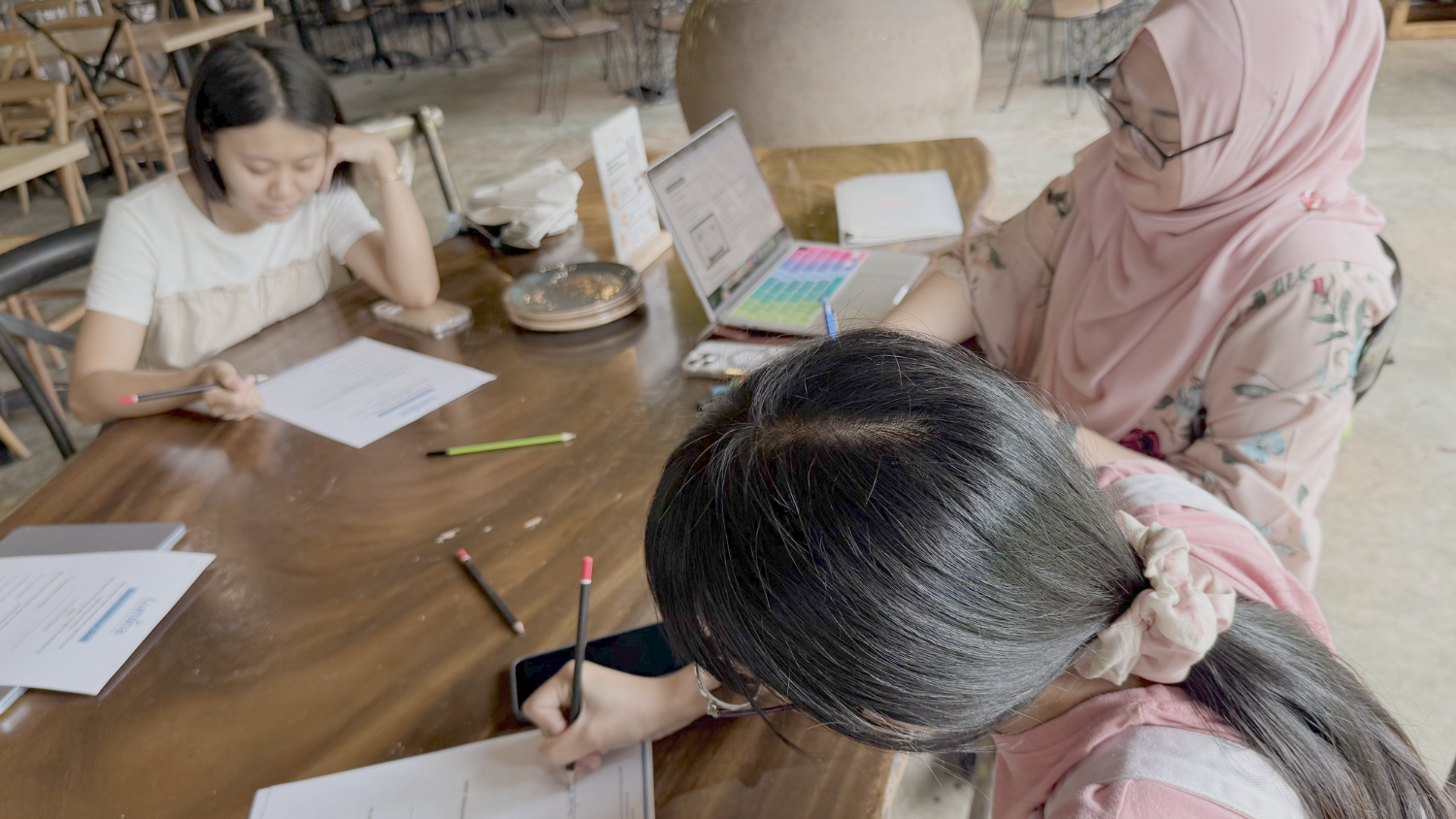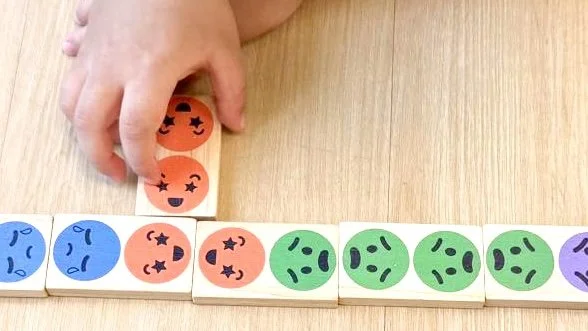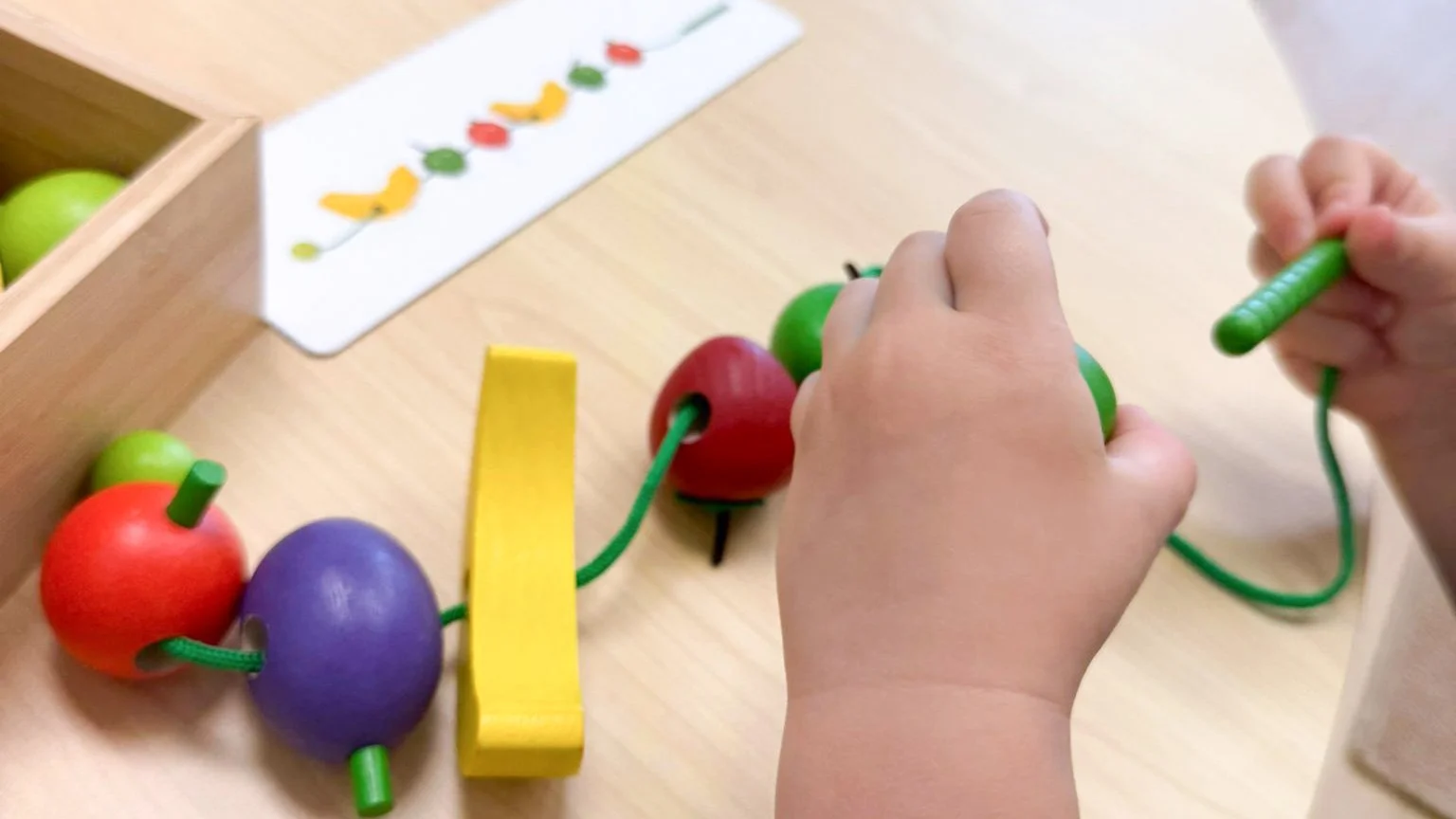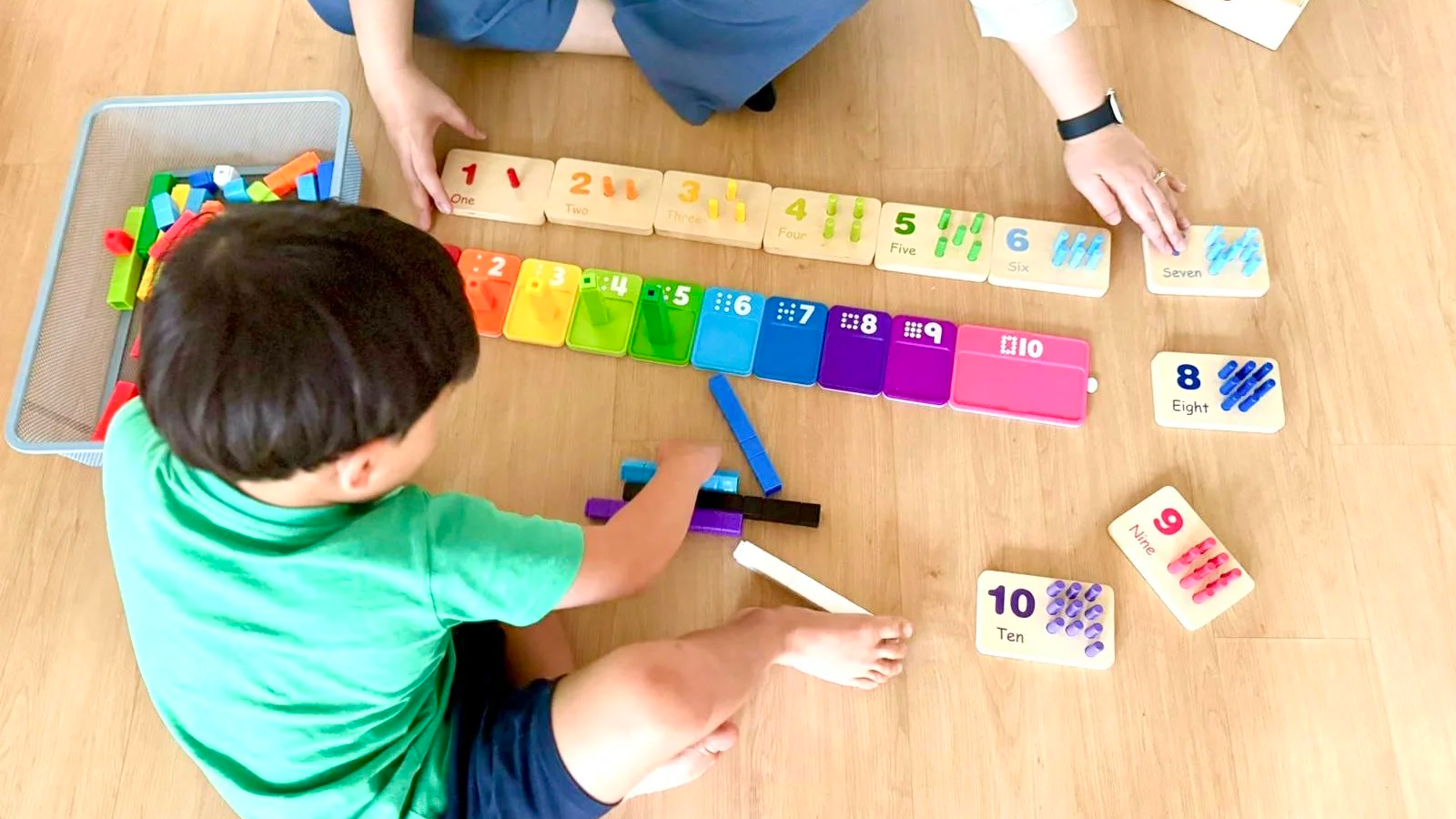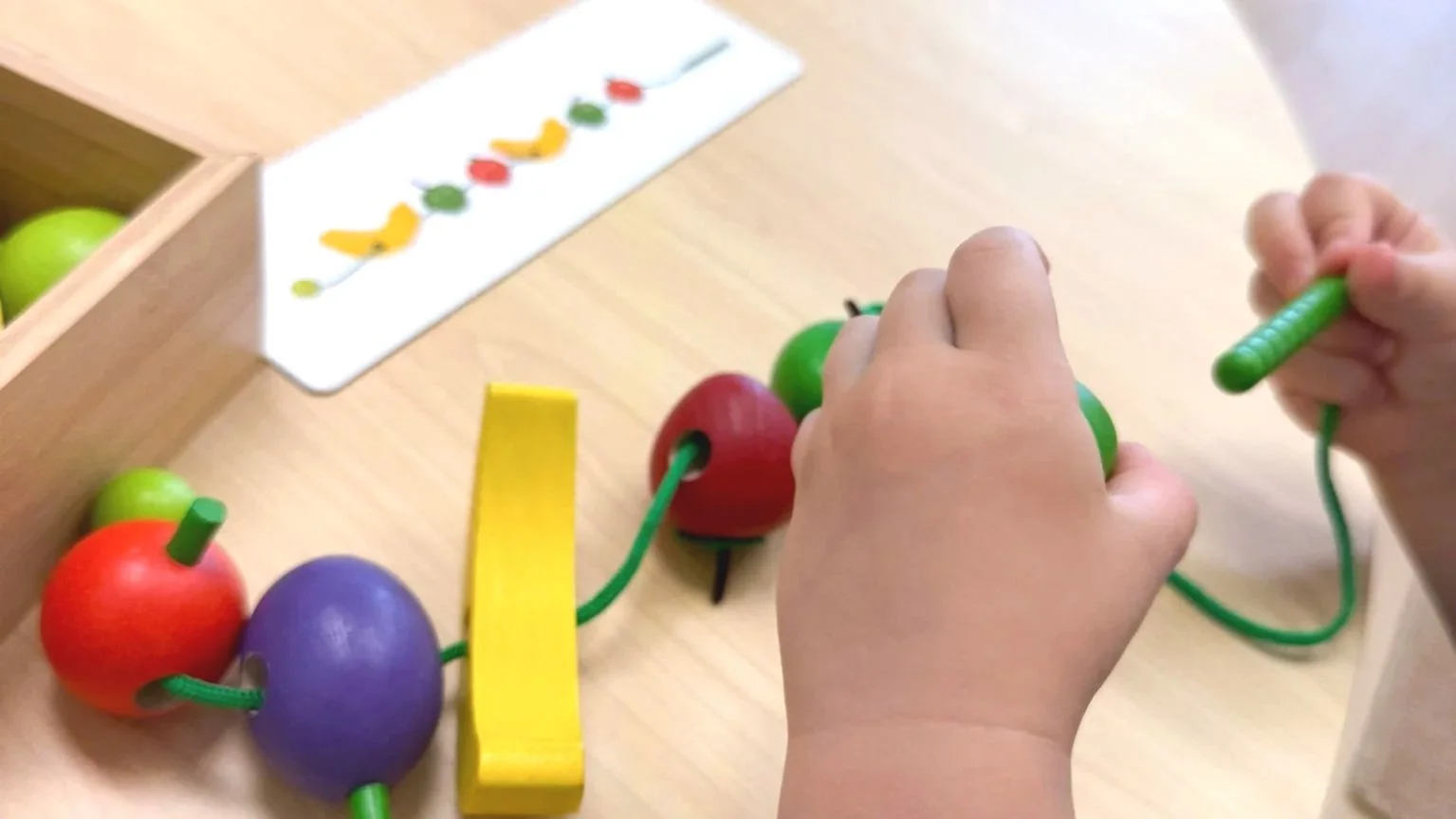Helping Children Take That First Step: Why Executive Functions Matter at Lumina International School
At Lumina, we often remind families that big journeys begin with small steps. And for young children, one of the most important steps they can take is learning how to start — how to organise themselves, focus, plan, and persist. These abilities, known as executive functions, are the foundation for confident, independent learners.
Executive functions include skills such as memory, attention, emotional regulation, task initiation, and time management. They are essential for learning… yet they are rarely taught explicitly in most schools.
Why we teach executive functions from the earliest years
In our multilingual, inquiry-based environment, children face new challenges every day. Whether they are exploring a science concept, collaborating with peers, or navigating three languages, they rely heavily on executive functions to make sense of their world.
This is why our approach places strong emphasis on:
1. Learning how to begin — and reducing overwhelm
Many children struggle not because a task is too hard, but because they don’t know where to start.
Our teachers break tasks into manageable steps and model simple routines:
“First… then… next…”
With this structure, children feel more capable and less anxious. They move from hesitation to action, gaining confidence along the way.
2. Building focus and self-regulation in a stimulating world
Attention spans are under pressure in today’s fast, digital environment.
Through hands-on projects, movement-based activities, outdoor learning, and predictable classroom rhythms, children learn to:
manage distractions,
stay engaged for longer stretches,
recognise and regulate their emotions,
and pause before reacting.
These are life skills—far beyond academics.
3. Developing a growth mindset
Executive functions naturally support a growth mindset.
When children set small goals, monitor their progress, and reflect on what they learned, they discover that effort and strategies matter more than immediate success.
Challenges become opportunities, not obstacles.
What this looks like at Lumina
In every class—from Nursery to Kindergarten—executive functions are woven into daily life:
tidying up and organising materials
planning a simple activity
following multi-step instructions
documenting discoveries with drawings or photos
discussing solutions with peers
managing transitions between languages
These routines help children feel capable, responsible, and proud of what they can do “all by myself”.
A skill for life, not just for school
If we want children to thrive academically and socially, we must teach them not only what to learn, but how to learn.
At Lumina, executive function development is just as essential as learning to read or count. It is part of how we foster autonomy, resilience, and joyful curiosity.
When children learn to take that first step—one clear, well-planned step—they begin a journey of lifelong confidence. And we are here to walk beside them, every step of the way.
When Children Lie: What They’re Really Trying to Tell Us
“Don’t lie to me!” — we’ve all said it at least once.
But do children really understand what lying is?
When “It wasn’t me!” isn’t about deception
When a young child says, “It wasn’t me, it was the cat,” it’s rarely about wanting to deceive.
More often, it’s about wanting to feel safe — to avoid making us angry or to protect that precious connection with us.
Before the age of 5 or 6, most children don’t yet distinguish between truth, imagination, and what they wish were true.
They live in a world where stories, fears, and emotions intertwine.
As they grow, their understanding evolves
With time, children begin to develop a sense of others’ thoughts and perspectives.
That’s when they start realising they can influence what others think — and that’s when the first “real” lies may appear.
But even then, it’s not about manipulation.
It’s about self-protection.
From fear to trust
So instead of asking “Why did you lie?”, try gently asking:
👉 “Were you afraid to tell me the truth?”
👉 “Did you think I’d be upset?”
👉 “What could we do differently next time?”
Honesty doesn’t grow out of fear — it grows out of trust and feeling safe enough to tell the truth.
Teacher Training at Lumina
At Lumina, teacher training goes far beyond curriculum, methods, and routines. It is a space to pause, observe, and reconnect with what sits at the heart of education: the human brain and the emotions that drive behaviour.
Our latest session focused on the science of emotional regulation — not as a theoretical concept, but as a living process that shapes how children learn, relate, and grow.
Understanding Emotional Regulation
When a child experiences frustration, anger, or fear, their limbic system takes over. The amygdala sends a signal of threat, activating the fight–flight–freeze response. In that instant, the prefrontal cortex — the part of the brain responsible for reasoning, impulse control, and empathy — goes offline.
This is why simply telling a child to “calm down” rarely works.
Before regulation can happen, co-regulation must occur. An adult’s calm presence acts as a bridge between emotional chaos and cognitive control. Our nervous system teaches before our words do.
How We Integrate This Understanding
At Lumina, this science is embedded in daily practice.
We train our educators to:
see behaviour as communication,
respond with curiosity rather than correction, and
turn emotional moments into learning opportunities.
Learning does not happen after emotions are managed — it happens through them.
Our Approach
A French curriculum anchored in academic rigour and evidence-based pedagogy.
A team trained in neuroscience and emotional development, able to meet each child where they are emotionally and cognitively.
A daily culture where empathy, reflection, and safety are central to learning.
Our Belief
A curriculum is only as strong as the adults who bring it to life.
And those adults teach best when they understand how the brain learns, feels, and connects.
Understanding Emotions: The First Step Toward Regulation
At Lumina International School, we believe that emotional intelligence is not something to be taught in isolation — it’s something children build through real experiences, one feeling at a time.
From Control to Understanding
❌ We don’t need children to control their emotions.
✅ We need them to understand them.
A few days ago, I observed a child clench his fists, his eyes filling with tears.
He wasn’t angry at anyone.
He was angry with himself.
Something hadn’t worked — a tower that kept falling, a puzzle piece that wouldn’t fit, a moment of “I can’t.”
Around him, adults moved gently, offering help, encouragement, distraction.
But what he needed wasn’t to be soothed.
He needed to be understood.
What Happens in the Brain
In moments like this, the brain is doing complex work.
It’s learning to tolerate discomfort, to make sense of error, to transform emotion into strategy.
That’s how emotional regulation truly begins — not by suppressing feelings, but by naming them and learning from them.
Each emotion plays a role in a child’s growth:
Anger protects boundaries and pushes for change.
Sadness slows thinking, allowing reflection and empathy.
Joy strengthens memory and fuels motivation.
When we rush to calm, we interrupt that process.
When we pause to understand, we teach children how to think — not just how to behave.
Connected, Not Just Calm
The goal isn’t a calm child.
It’s a connected one.
When children feel seen and understood, their emotional world becomes a foundation for curiosity, resilience, and empathy — qualities that shape lifelong learners.
💭 What if we stopped seeing emotions as reactions to manage, and started seeing them as messages to decode?
Learning Mathematics: Beyond Counting Rhymes
Mathematics begins in actions, relationships, and contexts — not in worksheets.
For many children, the first encounter with mathematics begins with the familiar chant: “one, two, three, four…”
But reciting a string of words is not the same as understanding numbers. As French researcher Rémi Brissiaud highlighted, the real challenge is helping children construct meaning behind numbers.
The limits of the “number rhyme”
A child may recite from one to 50 or 100 fluently without truly knowing what seven represents.
It is like singing the alphabet without grasping that each letter stands for a sound.
This distinction matters: memorisation can look like learning, but without meaning, it remains superficial.
Building meaning through concrete action
Children need to live and experience numbers before they can abstract them. This includes:
Counting real objects: lining up five marbles, giving three apples, sharing four pencils.
Comparing collections: “Do we have more cars or more dolls?”
Using their fingers: the first natural tool for representing quantities — for example, holding up three fingers on one hand and five on the other to show that together they make eight.
Through these experiences, children discover that five is not just a sound. It is a quantity that is bigger than four, smaller than six, and can be combined with others.
Numbers in context
Mathematics becomes meaningful when it is grounded in daily life:
Setting the table for four people.
Counting steps while climbing the stairs.
In school, here at Lumina, this can be:
Prepping for a cake recipe: “We need 2 eggs, 4 big spoons of flour, and 1 cup of sugar…
Handing out as many crayons as there are children.
Mathematics begins in actions, relationships, and contexts — not in worksheets.
Mathematics transcends language
One of the most fascinating aspects of mathematics is that once a child has understood a concept, it transcends vocabulary.
Whether a child says “three,” “trois,” or “三 (sān),” the underlying idea is the same.
At Lumina, once the concept of quantity is secured, language becomes a matter of translation, not comprehension. This reinforces the universality of mathematics and the importance of concept before code.
Children Aren’t Harder Today — The World Around Them Has Changed
In recent years, a common narrative has taken root: that children are less focused, more emotional, and somehow more difficult than previous generations. At Lumina, we challenge this perception.
The issue isn’t that children have changed for the worse. It’s that the world around them has transformed dramatically — and many of our systems, especially in education, have failed to adapt.
The Environment Has Shifted
Today’s children are navigating a world that is faster, louder, and more complex than ever before. They grow up in a culture of constant digital stimulation and diminishing downtime. Movement has been reduced, yet their developing bodies still crave it. Deep, meaningful connection is increasingly replaced by surface-level interactions. And all the while, academic and social pressures are intensifying — often beginning in early childhood.
Despite these shifts, we continue to hold children to the same behavioural standards that applied in a very different era. We expect them to concentrate, sit still, regulate their emotions, and perform consistently — all while operating within environments that can be overwhelming and dysregulating.
Rethinking the Question
When children struggle to focus or regulate their emotions, our instinct is often to ask: What’s wrong with this child?
At Lumina, we ask a different question: What’s happening around this child?
Because when children “act out” or disengage, it is rarely a sign of dysfunction. More often, it is a signal — a response to an environment that does not meet their developmental needs.
Children today are not less capable. But their nervous systems are more overloaded. Their attention is more fragmented. Their sense of purpose and emotional safety is often tenuous. If we want them to thrive, we must first understand the pressures they are responding to — and then build systems that help them cope, adapt, and grow.
A School Environment That Reflects the World They Inhabit
At Lumina International School, we are designing learning environments that meet children where they are — not where we wish they were. This means:
Creating calm, predictable spaces that support emotional regulation
Designing timetables with room for movement, rest, and meaningful connection
Valuing purpose and relevance in the curriculum, not just performance
Cultivating relationships of trust between teachers and students
Fostering a sense of safety, belonging, and agency in the classroom
We believe that focus, resilience, and calm are not traits to be enforced. They are outcomes of an environment that makes them biologically and emotionally possible.
Evolving With Our Learners
If we want to raise a generation of children who are curious, compassionate, and capable of navigating complexity, we must be willing to shift the lens. That starts with recognising that children are not inherently more difficult — they are adapting to a world we have yet to fully understand ourselves.
It is our responsibility to evolve with them. To listen to what they’re telling us through their behaviour. And to create schools that honour their needs, not dismiss them.
At Lumina, we are committed to building an educational model that grows with the children we serve — not against them.
Why Outdoor Play is More Than Just Burning Energy
It all begins with an idea.
At some point, every parent has said it: “Let them run outside, they’ll sleep better tonight.”
We’ve all experienced it—tired, happy children settling into an early bedtime, followed by a peaceful evening at home. But beyond the immediate calm, have you ever wondered why outdoor play has such a powerful effect on children’s bodies and minds?
The truth is, outdoor play is not just about “tiring them out.” It’s about building their brains and shaping skills that will serve them for life. Research in neuroscience shows that when children climb, run, balance, and explore, they are not only strengthening muscles—they are wiring their brains for success.
1. Strengthening Executive Function Skills
Executive functions—our ability to plan, focus, remember instructions, and manage emotions—are critical for learning and life. Outdoor play naturally challenges these skills: navigating uneven ground, deciding which branch to climb next, or figuring out how to build a fort all require problem-solving, self-control, and adaptability.
2. Boosting Creativity and Problem-Solving
Nature is unpredictable. A gust of wind, a change in terrain, a moving cloud—all present new scenarios that encourage flexible thinking. This type of play nurtures curiosity and helps children learn to adapt, think creatively, and solve problems in real time.
3. Reducing Stress and Supporting Emotional Well-Being
Time outdoors helps children’s bodies produce dopamine and serotonin—the “feel-good” chemicals that promote calm, happiness, and emotional balance. The sensory richness of nature, from the sound of rustling leaves to the warmth of sunlight, can soothe and reset an overstimulated mind.
4. Building Stronger Bodies and Sharper Minds
Climbing, running, and balancing are not just fun—they strengthen muscles, improve coordination, and fuel healthy brain development. Physical activity also promotes deeper, more restorative sleep, which is essential for memory, focus, and learning.
More Than Just Play
So, the next time your child comes home muddy, giggling, and tired, remember: they haven’t just been “playing.” They’ve been developing resilience, focus, creativity, and emotional strength—the very foundations of lifelong well-being and learning success.
At Lumina International School, we believe that education happens everywhere—not only within classroom walls. By embracing outdoor play as part of a holistic education, we give children the tools they need to thrive in school and beyond.
“It’s Too Hard!” — What to Say When Your Child Feels Stuck
It all begins with an idea.
At some point, every parent hears these words:
“It’s too hard!”
Our instinct is often to reply with encouragement like, “You just need to try harder.”
But what if there’s a better way to respond—one that helps build confidence, emotional resilience, and a lifelong love of learning?
Struggle Is Not a Problem—It’s Part of the Process
When children find something difficult, it’s not a sign that they’re failing. It’s a sign that they’re learning.
Moments of challenge help develop:
Persistence
Problem-solving
Emotional regulation
Self-awareness
Struggling is how children grow—not just academically, but socially and emotionally.
What Parents Can Do Instead
Here are some helpful ways to respond when your child is feeling overwhelmed:
1. Acknowledge the Struggle
“That does sound hard. I can see this is frustrating.”
Recognising how they feel helps them feel supported and heard, which makes it easier to move forward.
2. Reframe the Challenge as Growth
“You’re learning something new. That’s why it feels tricky—it means your brain is growing.”
Remind them that effort is valuable, even when the result isn’t perfect.
3. Ask What Kind of Help They Need
Instead of jumping in with solutions, ask:
“What would help you right now?”
This teaches them to reflect, identify their needs, and ask for the right kind of support.
4. Avoid Fixing It Right Away
While it’s tempting to jump in and solve the problem, it can rob them of a powerful learning opportunity.
Instead, coach them through it:
“Let’s think through it together.”
The Real Goal
Learning isn’t just about completing tasks. It’s about building the emotional and cognitive tools to face future challenges.
Let’s help our children:
Trust their ability to handle hard things,
View mistakes as learning moments,
Grow confident in their ability to overcome.
Why Do Children Sit at Desks? Rethinking the Classroom for Real Learning
It all begins with an idea.
When we picture a classroom, most of us imagine the same thing: rows of desks, a teacher at the front, and children sitting still. But have we ever stopped to ask why?
This classroom layout didn’t emerge because it supports how children learn best. In fact, it was designed during the industrial era—built to train children for factory life, not for critical thinking or creativity. Its goal was to maintain order, not to foster curiosity or collaboration.
So why does it still dominate our schools today?
Legacy, Not Learning
We’ve inherited this structure and assumed it must be right. Even when schools try to modernise, we often see this pattern:
For collaboration, we push desks together.
For listening, we go back to rows.
For writing, we ask for silence and stillness.
We change the furniture, but the assumptions stay the same: that learning happens best in neat, controlled segments.
But learning isn’t neat. And children aren’t machines.
Learning Is Messy, Human, and Alive
Real learning involves movement, conversation, discovery, and struggle. It doesn’t always sit still.
We ask children to collaborate, self-regulate, and think creatively—but place them in environments that prioritise compliance over connection.
What Does the Environment Teach Them?
Research shows:
Movement improves attention.
Flexible spaces support emotional wellbeing.
The learning environment deeply influences motivation and engagement.
So the question isn’t just where children sit—it’s:
What does the space tell them about how they are expected to behave, think, or feel?
At Lumina International School, We Believe in Environments That Reflect Purpose
We are rethinking what a classroom can be—not because change is trendy, but because it’s necessary.
Children need spaces that:
Support their developmental rhythms,
Encourage curiosity and collaboration,
Make them feel safe, seen, and empowered.
It’s time to move beyond tradition and start designing schools that align with how children actually learn and grow.



